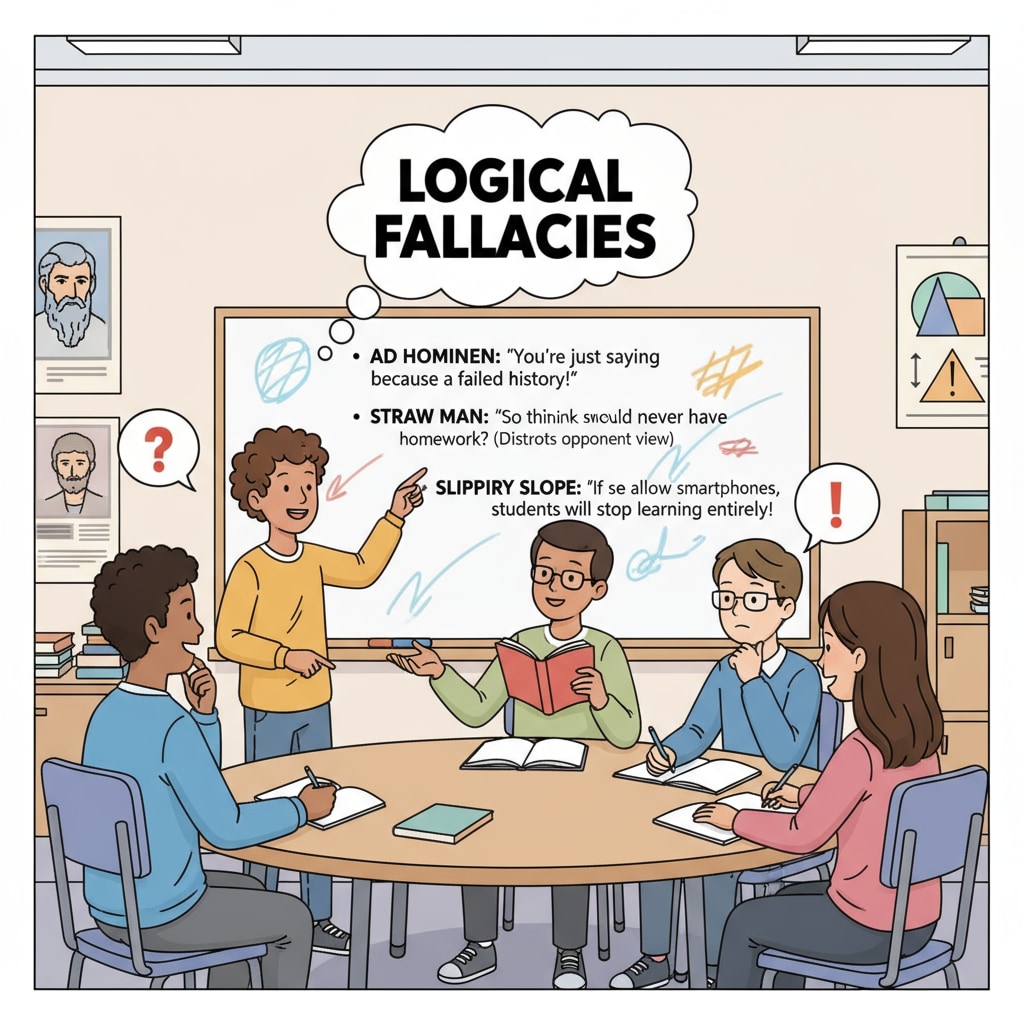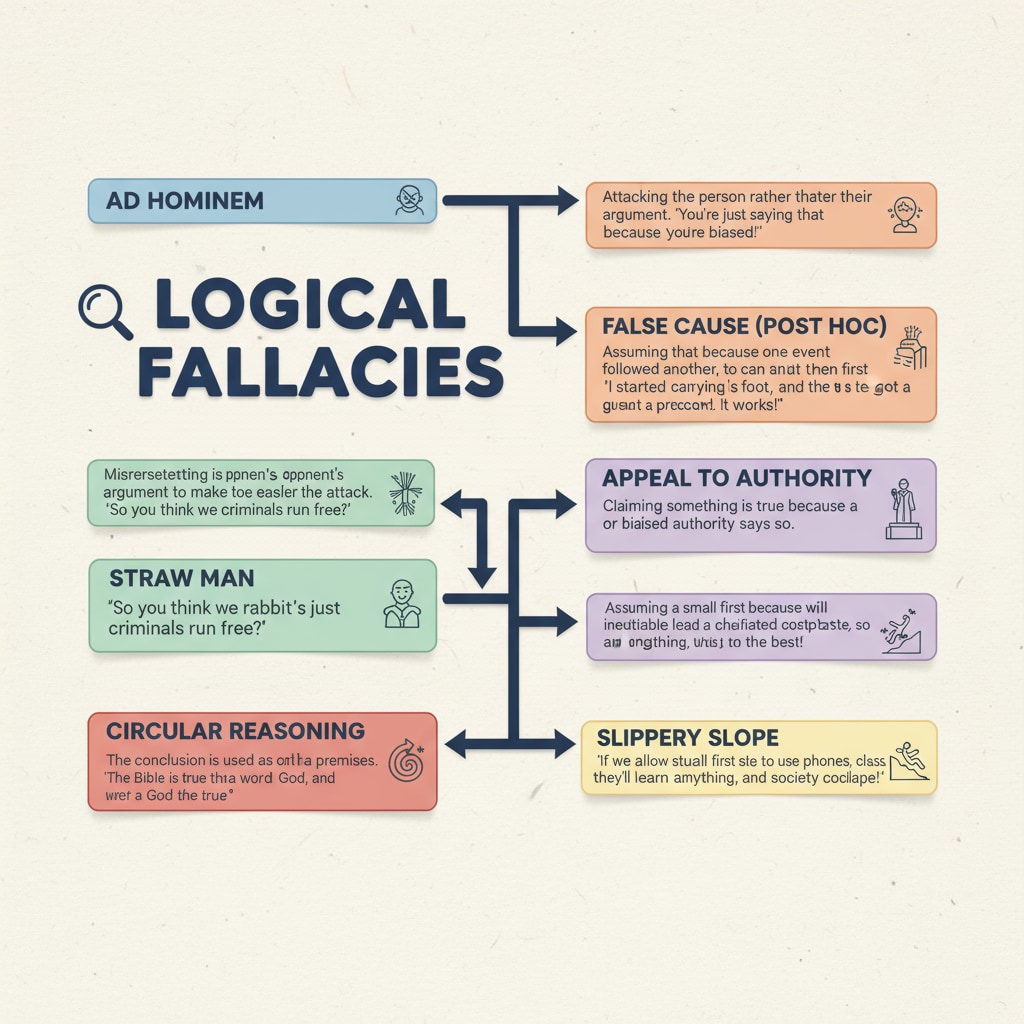In an era rife with information overload and the proliferation of false information, the ability to identify logical fallacies, engage in critical thinking, and recognize propaganda has become indispensable for high school students. Logical fallacies are errors in reasoning that can mislead and manipulate individuals. By incorporating logical fallacy education into high school curricula, we can empower students to become discerning thinkers and informed citizens.

The Foundation of Critical Thinking
Critical thinking is the ability to analyze, evaluate, and form well-reasoned judgments. Logical fallacy education serves as the cornerstone of critical thinking. When students learn to recognize common fallacies such as ad hominem attacks (attacking the person instead of the argument), straw man fallacies (misrepresenting an opponent’s argument), and false dichotomies (presenting only two options when there are more), they develop the skills to question assumptions and evaluate evidence. This, in turn, enables them to make more informed decisions and avoid being swayed by faulty reasoning. For example, in a debate about environmental policies, a student who is aware of logical fallacies can identify when an opponent uses a slippery slope fallacy to argue that a small change in regulations will lead to catastrophic consequences without providing sufficient evidence. Critical Thinking on Wikipedia

Elevating Media Literacy
In today’s media-saturated world, media literacy is essential. Students are bombarded with information from various sources, including social media, news outlets, and advertising. Many of these sources use logical fallacies to manipulate public opinion and promote their agendas. By learning about logical fallacies, students can become more media literate. They can analyze the messages they receive, identify hidden biases, and determine the credibility of the information. For instance, an advertisement that uses an appeal to emotion fallacy to tug at heartstrings and convince consumers to buy a product without providing objective facts can be easily recognized by a media-literate student. This awareness empowers students to be more discerning consumers of media content. Media Literacy on Britannica
Moreover, logical fallacy education can also help students develop the skills to create responsible media content. When they understand the importance of sound reasoning and the pitfalls of fallacious arguments, they are more likely to produce accurate and ethical media materials. Whether it’s writing a blog post, creating a video, or participating in online discussions, students with a solid understanding of logical fallacies can contribute to a more informed and rational online environment.
Readability guidance: As seen above, we’ve used short paragraphs to convey key ideas. Each point is presented clearly, and we’ve incorporated external links to reliable sources. The use of examples helps to illustrate complex concepts like logical fallacies and their impact on critical thinking and media literacy. We continue to ensure that the passive语态 is used minimally, and most sentences contain transition words for better flow.


